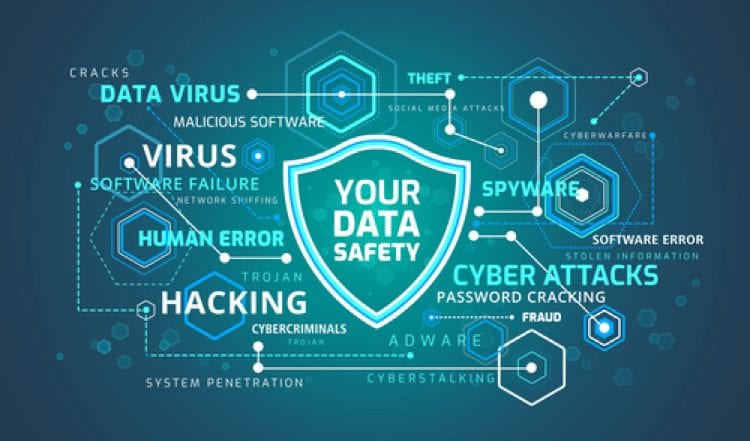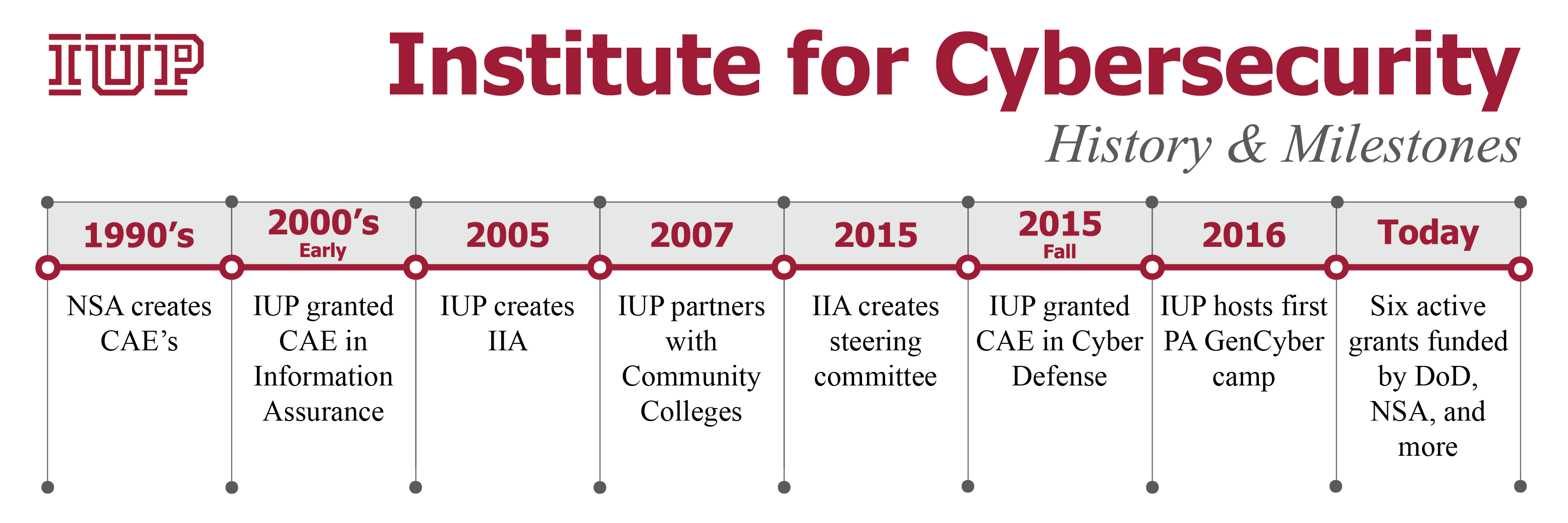What is provenance in cyber security – What is provenance in cybersecurity? Imagine a detective trying to solve a crime. They need to trace the evidence, figure out where it came from, and how it got there. That’s what provenance is all about in the digital world. It’s like a digital fingerprint, helping us understand the origins and history of files, emails, and even network connections.
It’s a crucial tool in cybersecurity, giving us a deeper understanding of what happened, who was involved, and how to protect ourselves from future attacks.
Provenance is a vital concept in cybersecurity because it allows us to track the journey of digital artifacts. By understanding the origins and transformations of files, emails, and network connections, we can gain valuable insights into potential security threats. This knowledge empowers us to identify the source of attacks, trace the spread of malware, and even reconstruct the timeline of events leading to a security breach.
What is Provenance in Cybersecurity?
Provenance in cybersecurity refers to the ability to track the origin, history, and evolution of digital artifacts, like files, emails, or network connections. It’s like having a digital chain of custody that allows you to trace back the path of a piece of data, ensuring its authenticity and integrity.
The Importance of Provenance
Provenance is essential for understanding the origins and evolution of digital artifacts. It helps in various cybersecurity tasks, including:
- Digital Forensics: Provenance helps investigators trace the origin and history of malicious files, emails, or network connections, aiding in identifying the source of attacks and attackers.
- Incident Response: By understanding the provenance of compromised systems, security teams can better isolate the affected areas, contain the damage, and prevent further exploitation.
- Security Auditing: Provenance helps organizations track the modifications made to sensitive data, ensuring that only authorized changes have been made and detecting any unauthorized alterations.
- Data Integrity: Provenance ensures that the data hasn’t been tampered with or altered, maintaining the authenticity and reliability of digital evidence.
Examples of Provenance
Here are some examples of how provenance can be used to trace the history of digital artifacts:
- File Provenance: Imagine a malicious file is discovered on a system. Provenance can track its origin, including where it was downloaded from, how it was transferred, and which systems it has infected. This helps identify the attack vector and the attacker’s techniques.
- Email Provenance: Provenance can track the origin of a phishing email, revealing the sender’s identity, the email’s route, and the recipients. This information is crucial for understanding the phishing campaign’s scope and impact.
- Network Connection Provenance: Provenance can track the history of a network connection, showing which devices and systems were involved, the time and duration of the connection, and the data transferred. This information is vital for detecting and investigating unauthorized network access.
Provenance Tracking Methods
Provenance tracking in cybersecurity is like keeping a detailed record of a file’s journey, from its creation to its final destination. This record helps us determine the file’s authenticity, integrity, and origin, which is crucial for security investigations and incident response. There are various methods for tracking provenance, each with its strengths and weaknesses.
Timestamps
Timestamps are a fundamental method for tracking provenance. They record the time and date of events related to a file, such as creation, modification, and access. This information can be used to establish a timeline of events, helping to determine the order in which actions were taken.
- Strengths: Simple to implement, widely available, and provide a basic level of tracking.
- Weaknesses: Timestamps can be easily manipulated, making them unreliable as a sole method for provenance tracking. They do not provide information about the user who performed the action or the specific changes made to the file.
Digital Signatures, What is provenance in cyber security
Digital signatures are a more robust method for tracking provenance than timestamps. They use cryptography to verify the authenticity and integrity of a file. A digital signature is created using a private key and can be verified using the corresponding public key. If a file has been tampered with, the digital signature will be invalid.
- Strengths: Provide a high level of assurance regarding the authenticity and integrity of a file. They can also be used to identify the originator of the file.
- Weaknesses: Require the use of public-key cryptography, which can be complex to implement. Digital signatures can be forged if the private key is compromised.
Blockchain Technology
Blockchain technology offers a decentralized and immutable ledger for recording provenance information. Each transaction, or event, is recorded in a block, and blocks are linked together in a chain. This creates a permanent and tamper-proof record of all activities related to a file.
- Strengths: Offers a highly secure and transparent method for tracking provenance. The decentralized nature of blockchain technology makes it resistant to tampering.
- Weaknesses: Blockchain technology can be complex to implement and requires significant computational resources. The immutability of blockchain records can also be a challenge, as it can be difficult to correct errors or make changes.
Challenges Associated with Provenance Tracking
Provenance tracking presents several challenges, including:
- Data Storage: Tracking provenance requires storing large amounts of data, which can be a significant challenge for organizations with limited storage capacity.
- Scalability: As the volume of data grows, it can become increasingly difficult to track provenance effectively. This requires scalable solutions that can handle large amounts of data.
- Privacy: Provenance tracking can raise privacy concerns, as it involves collecting and storing information about user activities. Organizations must balance the need for security with the need to protect user privacy.
Applications of Provenance in Cybersecurity

Provenance, in the context of cybersecurity, is not just about tracking data; it’s about understanding the context of that data and how it has been used. This understanding can be crucial in responding to security incidents, analyzing malware, and verifying the authenticity of digital evidence.
Incident Response
Provenance plays a vital role in incident response by providing valuable insights into the attack lifecycle. It can help security teams identify the source of an attack, understand the attacker’s actions, and determine the extent of the compromise.
- Identifying the source of an attack: Provenance can trace the origin of malicious activity by analyzing the chain of events that led to the attack. For example, if an attacker gains access to a system through a phishing email, provenance can help track the email’s origin, the server it was sent from, and the user who opened it.
- Reconstructing the timeline of events: Provenance can reconstruct the sequence of events leading to a security breach, providing a detailed picture of the attack’s progression. This information can be used to identify vulnerabilities exploited by the attacker and to develop strategies for preventing similar attacks in the future.
Malware Analysis
Provenance is also essential in malware analysis. By tracking the malware’s path through a system, analysts can gain a deeper understanding of its behavior and identify its origins.
- Tracing the spread of malware: Provenance can help trace the spread of malware through a network, identifying the infected systems and the methods used to propagate the malware. This information can be used to contain the spread of the malware and to develop strategies for preventing future infections.
- Identifying the malware’s source: Provenance can help determine the source of malware, such as the website or email from which it was downloaded, or the malicious actor who created it. This information can be used to track down the malware’s creators and to prevent future attacks.
Digital Forensics
Provenance is a crucial element in digital forensics, as it helps verify the authenticity of digital evidence and establish its chain of custody.
- Verifying the authenticity of digital evidence: Provenance can be used to verify the authenticity of digital evidence by tracking its origin and ensuring that it has not been tampered with. This is particularly important in legal proceedings, where the authenticity of evidence is paramount.
- Establishing the chain of custody: Provenance helps establish the chain of custody for digital evidence, demonstrating that it has been handled securely and that its integrity has been maintained. This is essential for ensuring the admissibility of evidence in legal proceedings.
Provenance and Data Integrity

Provenance is crucial for ensuring data integrity in cybersecurity. By recording the history of data modifications, provenance provides a verifiable trail that helps to identify any unauthorized changes or manipulations. This information can be used to determine the authenticity and trustworthiness of data, making it a vital component of data security and compliance efforts.
Provenance and Data Trustworthiness
Provenance plays a vital role in establishing the trustworthiness of data sources. It provides a transparent and verifiable history of data modifications, allowing users to trace the origin and evolution of data. This information can be used to assess the reliability of data sources and ensure that data has not been tampered with or corrupted.
- Data Lineage: Provenance helps track the lineage of data, tracing its path from its source to its current state. This information can be used to identify potential sources of data corruption or manipulation.
- Data Authenticity: By providing a verifiable history of modifications, provenance helps to ensure the authenticity of data. It can be used to detect any unauthorized changes or manipulations that may have occurred.
- Data Integrity: Provenance is a critical component of data integrity, ensuring that data has not been altered or corrupted. By tracking data modifications, provenance helps to maintain the consistency and accuracy of data over time.
Provenance for Data Manipulation Detection
Provenance can be used to detect and prevent data manipulation by providing a detailed history of data modifications. This information can be used to identify any unauthorized changes or alterations that may have occurred, allowing for early detection and remediation.
- Auditing and Monitoring: Provenance data can be used to audit and monitor data modifications, identifying any suspicious activity or unauthorized changes. This can help to detect and prevent data manipulation attempts.
- Data Recovery: In the event of a data breach or manipulation, provenance can be used to recover the original, unaltered data. By tracking data modifications, provenance can help to restore data to its previous, trusted state.
- Forensics: Provenance data can be used in forensic investigations to identify the source and nature of data manipulation. This information can be used to track down perpetrators and restore data integrity.
Challenges and Future Directions

While provenance tracking offers numerous benefits for cybersecurity, its implementation comes with challenges. These challenges range from the cost of developing and maintaining provenance systems to the complexity of handling large datasets and the need for scalability.
Challenges in Implementing Provenance Tracking Systems
The practicality of provenance tracking in real-world scenarios hinges on overcoming several challenges.
- Cost: Building and maintaining a comprehensive provenance system can be expensive, requiring significant investment in infrastructure, software development, and specialized personnel.
- Complexity: Implementing provenance tracking can be complex, especially in distributed and dynamic environments. It involves designing and implementing robust mechanisms to capture, store, and analyze provenance data.
- Scalability: Provenance systems must be scalable to handle the massive amounts of data generated in modern computing environments. Scalability challenges include managing storage requirements, efficient data retrieval, and real-time analysis.
- Privacy Concerns: Provenance data can contain sensitive information about users and their activities. Addressing privacy concerns requires careful consideration of data anonymization techniques and access control mechanisms.
Automated Provenance Tracking
Automated provenance tracking aims to simplify and streamline the process of capturing and managing provenance information.
- Automatic Instrumentation: Tools and techniques for automatically instrumenting software applications and systems to capture provenance data without manual intervention. This can involve dynamic analysis, code transformation, or using specialized libraries.
- Machine Learning for Provenance Inference: Leveraging machine learning algorithms to infer provenance information from incomplete or noisy data. This can be particularly useful in situations where capturing complete provenance is challenging or infeasible.
Provenance for Cloud Computing and Distributed Systems
Cloud computing and distributed systems pose unique challenges for provenance tracking.
- Distributed Data and Computation: Provenance data can be scattered across multiple nodes in a distributed system. This requires mechanisms to collect and aggregate provenance information from different sources.
- Dynamic Environments: Cloud environments are often dynamic, with resources being allocated and deallocated frequently. Provenance systems need to adapt to these changes and maintain accurate provenance records.
Integration of Provenance with AI and ML
Integrating provenance tracking with AI and ML can enhance the transparency, explainability, and trustworthiness of these technologies.
- Explainable AI: Provenance can provide insights into the decision-making process of AI and ML models, helping to explain their predictions and identify potential biases.
- Model Auditing: Provenance tracking can enable the auditing of AI and ML models, allowing researchers and practitioners to trace the origin of data used in model training and identify potential vulnerabilities.
In the ever-evolving landscape of cybersecurity, provenance plays a critical role in ensuring the integrity and trustworthiness of digital information. By providing a verifiable history of data modifications, provenance helps us detect and prevent manipulation, ensuring the reliability of our digital assets. As technology advances, the importance of provenance will only grow, driving the development of more sophisticated and automated tracking systems.
This will allow us to better understand and defend against the increasingly complex cyber threats we face today.
FAQ Summary: What Is Provenance In Cyber Security
What are some real-world examples of how provenance is used in cybersecurity?
One example is in malware analysis. By tracking the provenance of a malicious file, security researchers can determine its origins, identify its creators, and understand its propagation methods. This information helps in developing effective countermeasures to prevent similar attacks.
How does provenance help in incident response?
In incident response, provenance helps to reconstruct the timeline of events leading to a security breach. By tracing the history of affected files and systems, investigators can identify the attacker’s actions, the compromised systems, and the extent of the damage. This information is crucial for containing the breach and preventing future attacks.
What are some of the challenges associated with implementing provenance tracking systems?
Implementing provenance tracking systems can be challenging due to factors such as cost, complexity, and scalability. Storing and managing vast amounts of provenance data can be resource-intensive, and ensuring that provenance information is accurate and reliable requires robust mechanisms.






